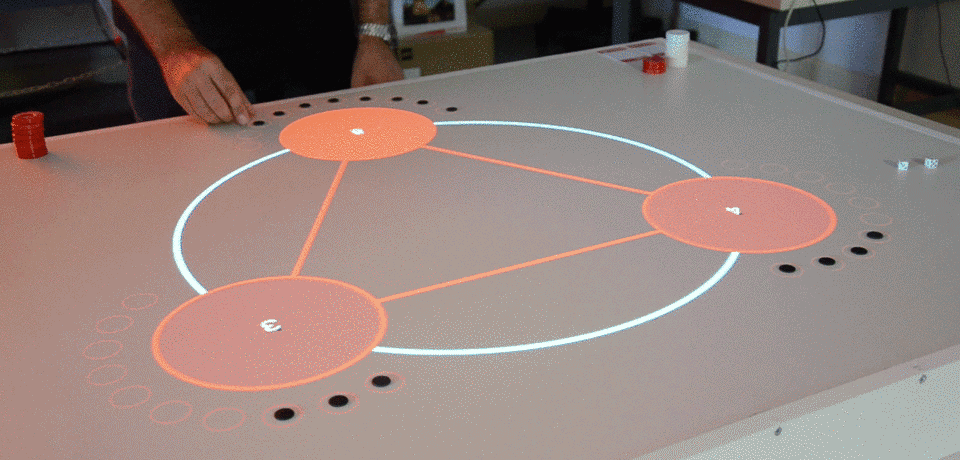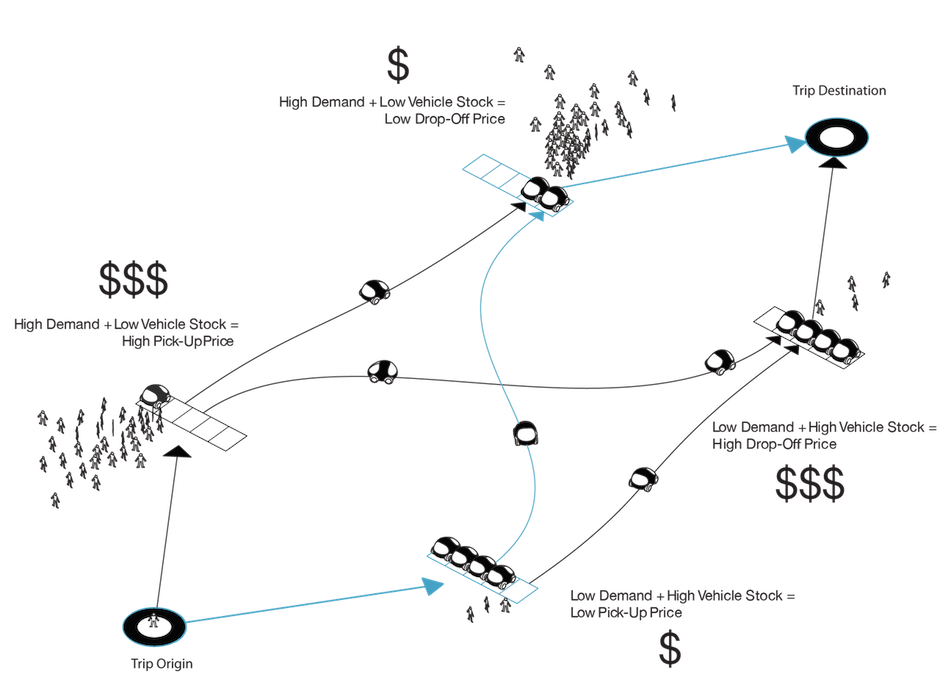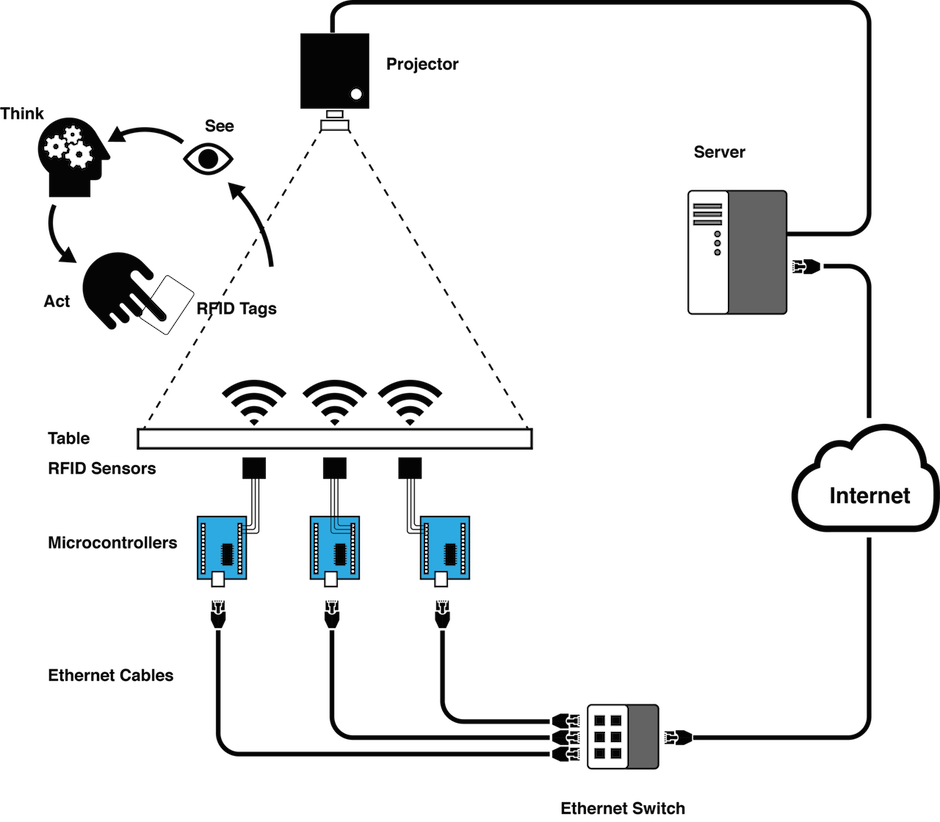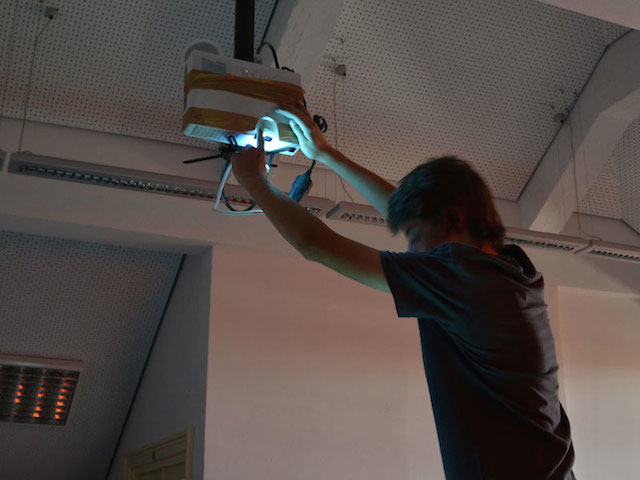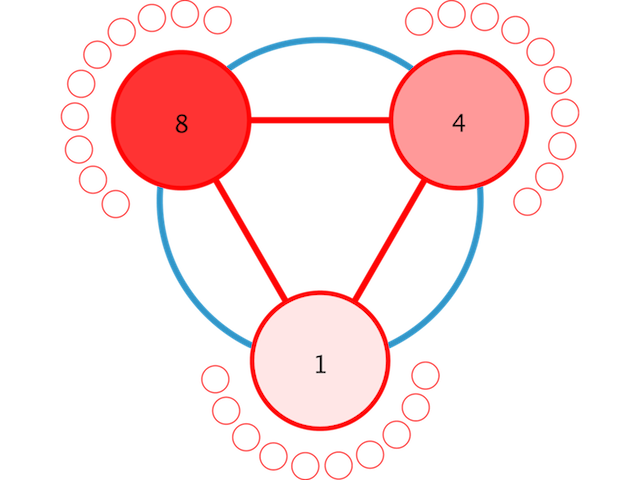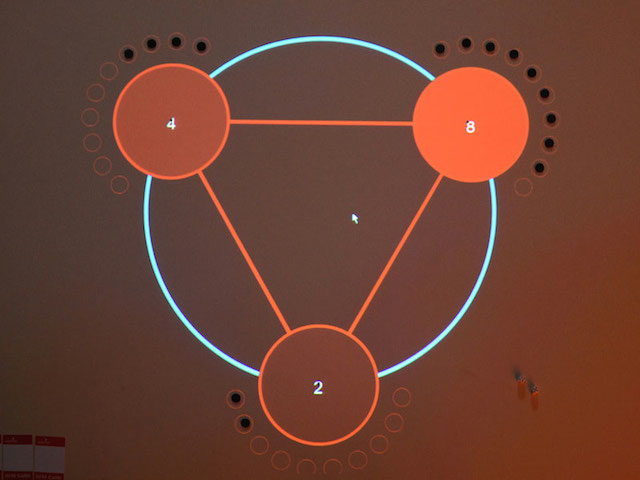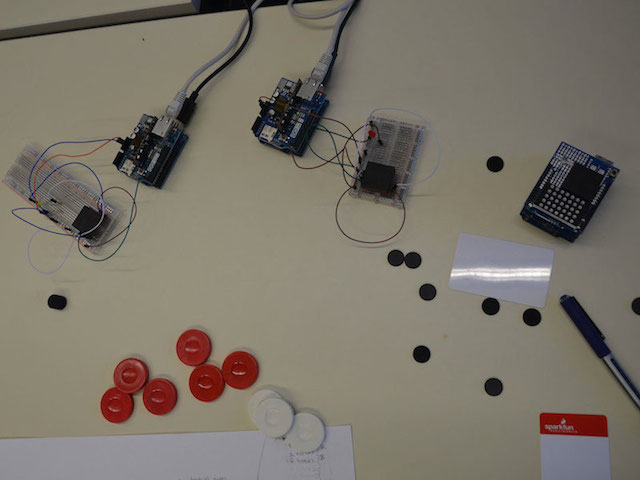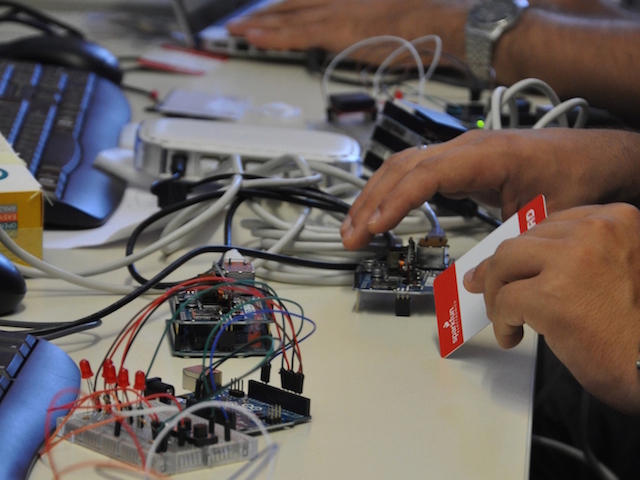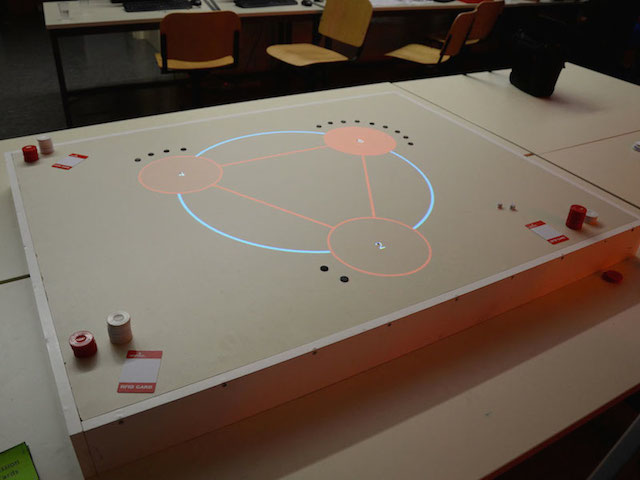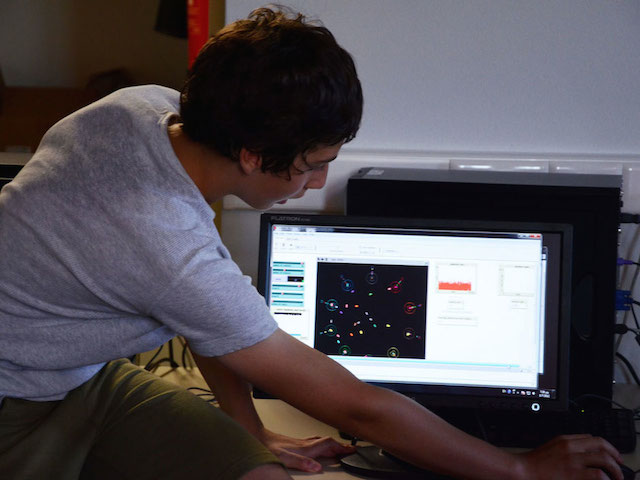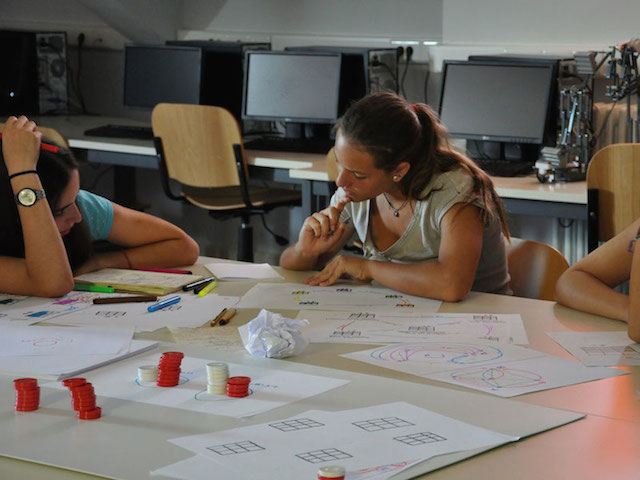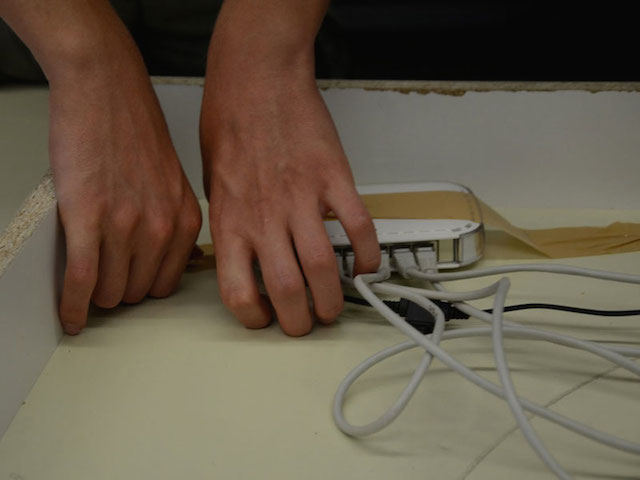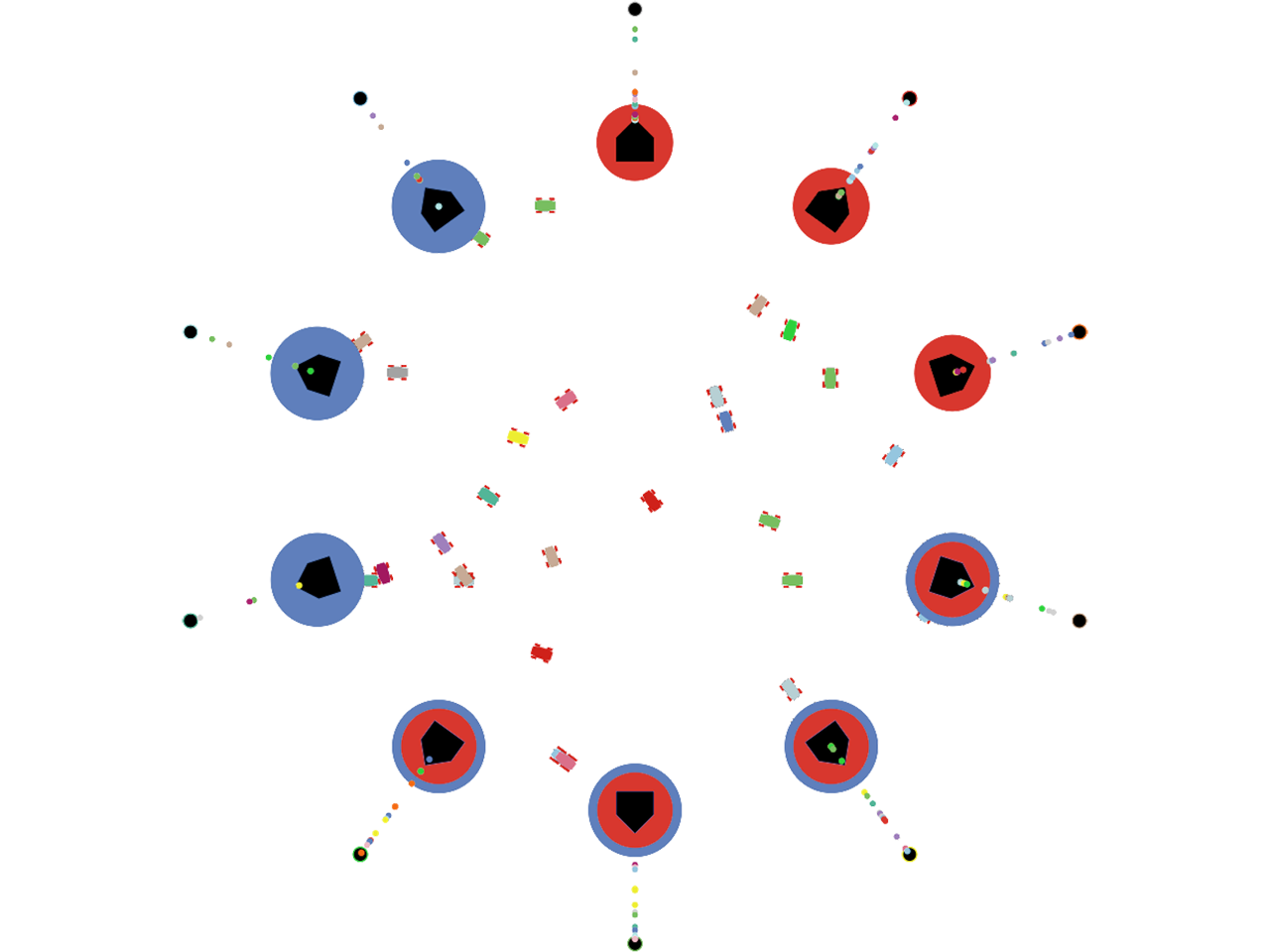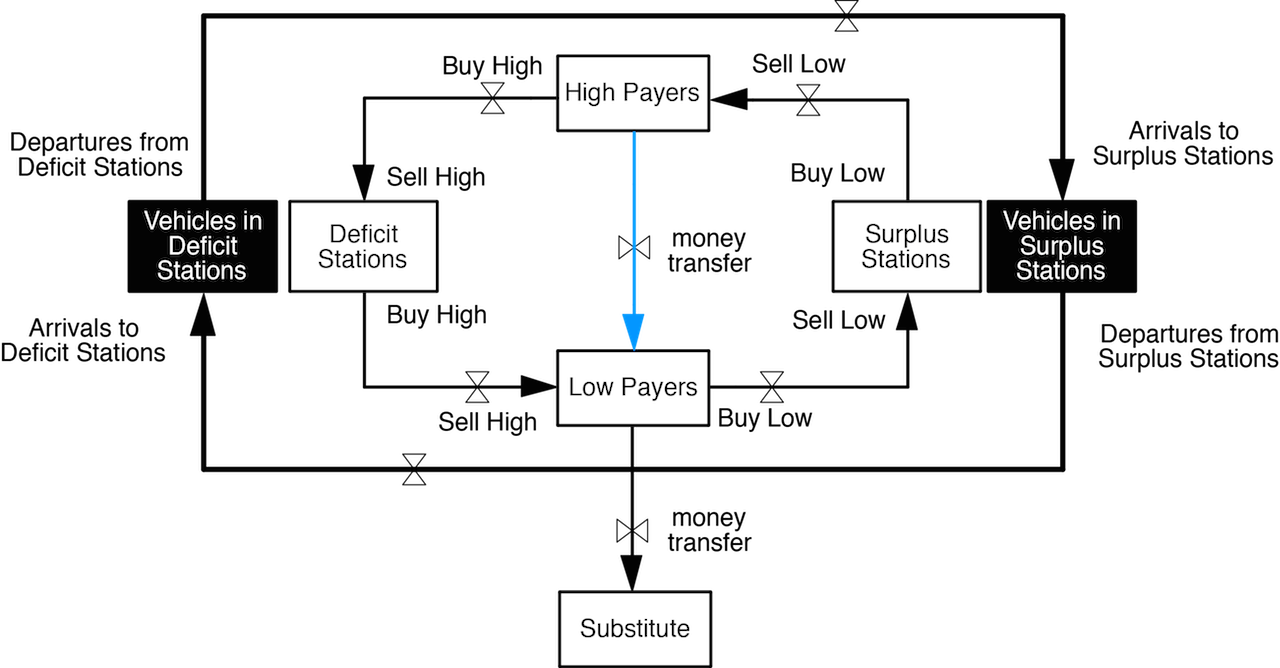Cloudcommuting Game
The Cloudcommuting game is an interactive board game and an educational tool that explores decision making in dynamically priced MOD systems. Two players control a team of commuter pawns each, while a third player controls the pricing of the stations. Commuters move between stations using either a MOD vehicle or the public transit spending different combinations of money and time. Commuters score by accomplishing origin-destination missions while the banker scores each time a commuter uses the MOD system.
By playing the game participants understand the flow of money from high-payers to low-payers through the stations. All players must collaborate to win more points. The employed technology uses an array of RFID sensors mounted underneath the board surface to track pick-ups and drop-offs. Each sensor connects to the Internet through an Arduino microcontroller. Each time a player taps an RFID tag on a station, it sends a message to a central computer, which updates a pricing visualization scheme. The visualization is projected back to the surface informing the players about the payoffs of their options, closing the game's feedback loop.
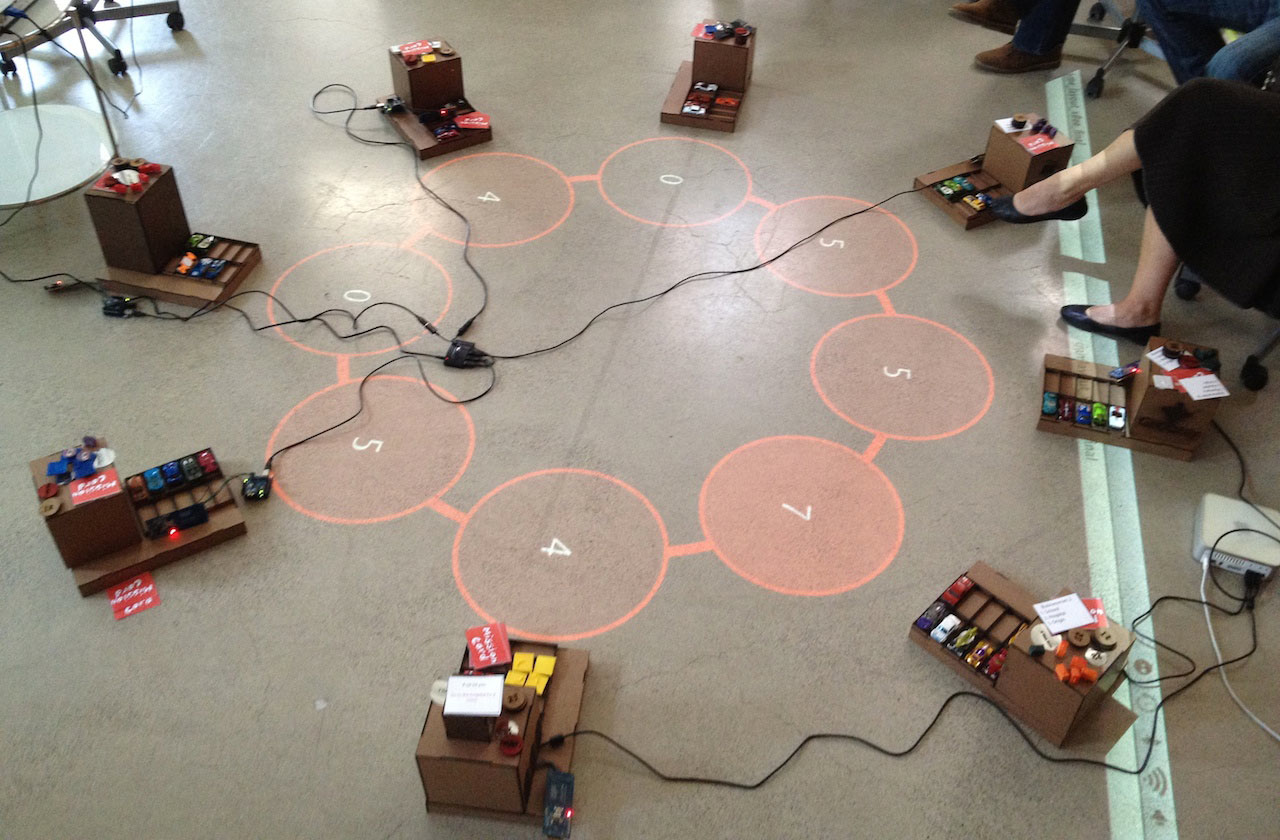
The feedback loop
All players must collaborate to win more points. The employed technology uses an array of RFID sensors mounted underneath the board surface to track pick-ups and drop-offs. Each sensor connects to the Internet through an Arduino microcontroller. Each time a player taps an RFID tag on a station, it sends a message to a central computer, which updates a pricing visualization scheme. The visualization is projected back to the surface informing the players about the payoffs of their options, closing the game's feedback loop.
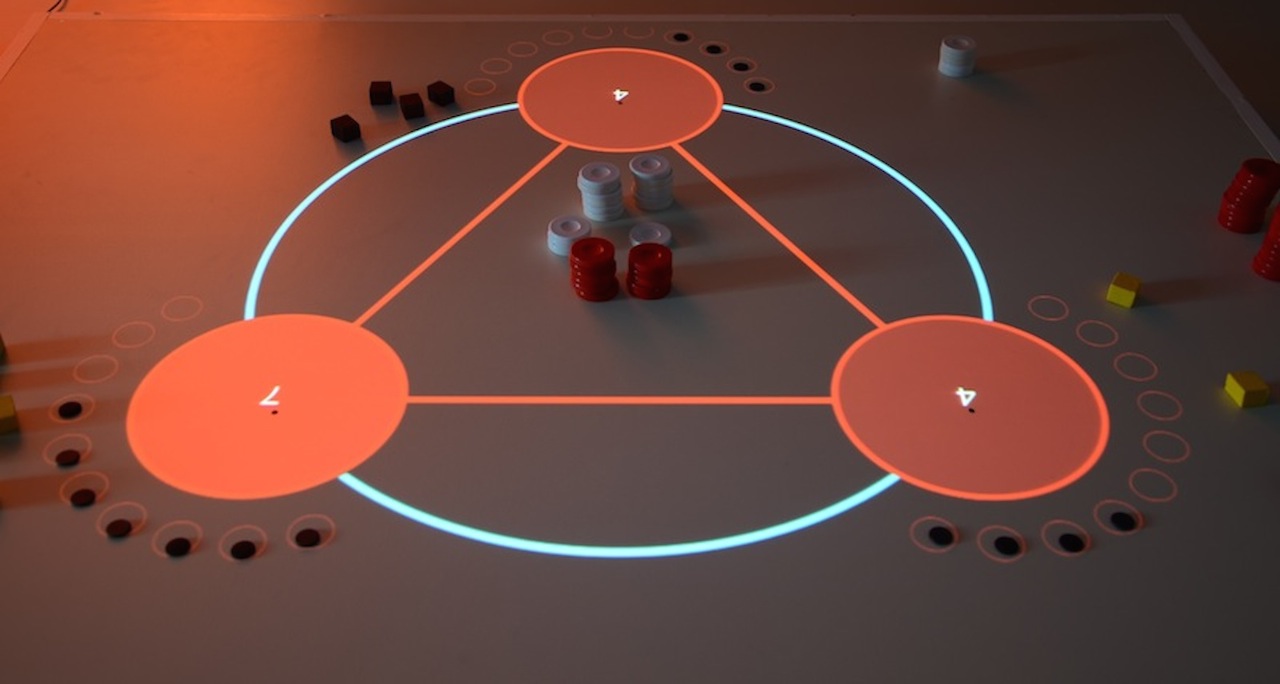
Game Development, Human Collaboration and Learning
During the workshops, students work collaboratively in four teams: The first team designs the layout and the rules of the game, finding tangible ways to represent parameters that affect decision-making, like money and time. The second team develops the electronic infrastructure for sensing pickups and drop-offs and sending messages to a remote computer. The third team programs the computer to receive those messages, estimate prices, and visualize prices back to the board game to influence the decisions of the players. The fourth team develops a computer-simulated version of the game that is then used as a comparative means.
Students learn by collectively playing with their invention and observing with their own eyes and hands how the game brings itself in equilibrium as players compete each other. Some of the questions students explore are: how can cooperation emerge from selfish behavior? How and when can the game reach a sustainable economic equilibrium? In what other systems can we apply similar ideas?
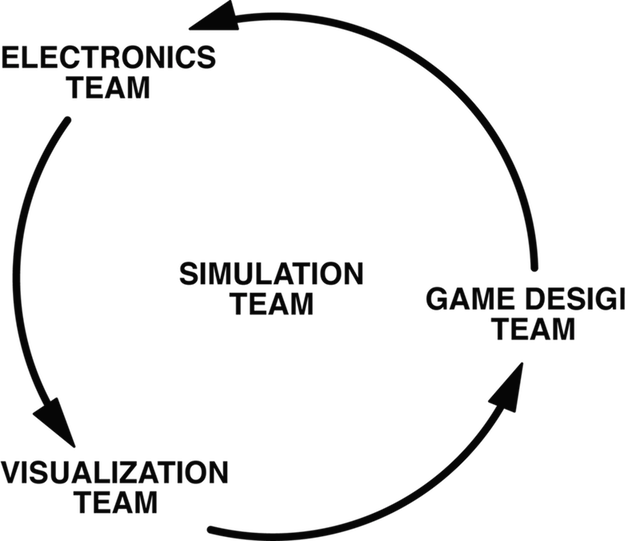
Due to task interdependence none of the teams could work without the feedback of the others. For example, game design depended on the technology of the technical teams while their decisions depended in turn on the concept of the game design. Furthermore gameplay decisions had to be simple enough so that the simulation team could model them and so forth.
Multi-agent simulation
A multiagent simulation model of the game constitutes an abstract and stylized version of the system that players emerge themselves into. The simulation model serves as a comparative means to build a discussion on how far from rationality, human behavior is.
Rules of Game
The game resembles a city consisting of interconnected neighborhoods, each with a limited number of parking spaces and vehicles. Commuters can move between blocks by a MoD vehicle, public transit, or any combination of the two. Commuters use both time and money to travel however each commuter starts with a different mix of those two resources based on her profile. Each transportation mode consumes different mix of time and money units per trip. Commuters earn points by accomplishing origin-destination missions while the banker each time a MOD vehicle is used. The more trips commuters make using MOD vehicles the more the money circulates in the game. If players and banker do not cooperate then money flows out of the economy till everyone runs out of resources. Players must use wisely their available resources to earn as many points as possible: the commuters by selecting bundles of MOD and public transit trips, while the banker by selecting prices that attract commuters. Winner is the player with the highest score at the end of the game. For the pricing we used a scenario of a two-sided market competing station-traders: commuters buy vehicles from origin stations and resell them to destination stations paying the difference of those two transactions which can thus be positive, zero, or negative (rewarding).
